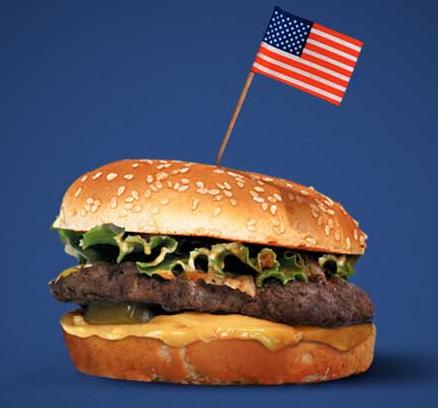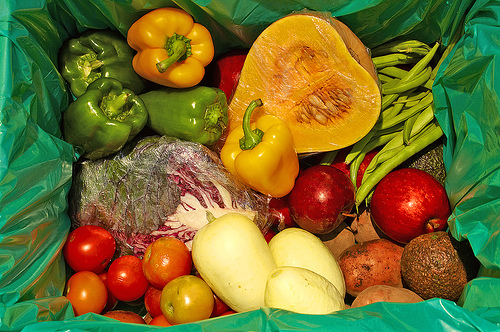Happy Holidays! Just saying those words is enough to evoke joyful images of
![]() families gathered in the kitchen preparing a succulent holiday meal to be enjoyed together, or excited and wide-eyed children opening gifts next to a beautifully decorated Christmas tree. When I close my eyes, I can almost taste the cinnamon-spiced hot apple cider. Yum. Unfortunately, for some of us, the holiday season also means traveling long distances to be with our loved ones; fighting the crowds at busy stores as we endlessly try to find the perfect gifts; and paying higher energy bills resulting from our holiday lights and all of our cooking.
families gathered in the kitchen preparing a succulent holiday meal to be enjoyed together, or excited and wide-eyed children opening gifts next to a beautifully decorated Christmas tree. When I close my eyes, I can almost taste the cinnamon-spiced hot apple cider. Yum. Unfortunately, for some of us, the holiday season also means traveling long distances to be with our loved ones; fighting the crowds at busy stores as we endlessly try to find the perfect gifts; and paying higher energy bills resulting from our holiday lights and all of our cooking.
Amidst all the holiday cheer, sometimes it is inconvenient to think about how our activities might contribute to climate change. The purpose of the Holiday Edition of Green-up Your Life! is to give easy ideas about how to have the lowest impact on the earth while still enjoying the holiday season.
With all the crowds and delays, flying during the holiday season can be really frustrating. And what about those 4 to 8 hour drives? Unfortunately for many of us, flying or driving are often the only options – for now. The future, however, looks bright. President Obama is already in support of investing in the high-speed national rail service, as it would reduce traffic congestion, cut dependence on foreign oil and improve the environment. It would also create many new green-jobs, something that we desperately need to jump-start the economy. What can you do? Click here to tell your Representatives in Congress that you are in favor of appropriating government funds towards the creation of a national high-speed passenger rail system. I have to admit, there is something romantic about taking the train home for the holidays.
Giving gifts makes us feel good; it is a way to let our loved ones know we are thinking about them; and it is a token of appreciation of being part of another person’s life. Too often, though, we get caught up in the act of giving a gift, without thinking about the repercussions. By following some simple guidelines, you can keep your gifts environmentally friendly, and socially responsible.
- Skip anything that you plug in, or that requires batteries.
- Buy from local vendors when you can. I can think of many gift ideas, from hats and scarves, to food, to jewelry, to artwork, that you can buy from an artisan in your own community.
- Think outside the box: Give a gym membership, a haircut, a massage, or tickets to a game or a concert.
- Combine errands, or better yet, leave the car in a parking spot and walk from store to store.
- Skip the wrapping paper: Use an old newspaper or a paper bag instead. Same goes for a card: Unless it is a private message, write something right on what ever material you wrap the present in.
Do you need a gift for people who already have everything they could ever want? Buy them something from Oxfam. A gift such as soap, purified water, manure, seeds for a garden, a cooking stove, a bicycle, or a dozen chicks will be delivered to somebody in the world who needs it, and your friend will get a card thanking them for their contribution. This kind of gift can be more thoughtful than yet another sweater, and it is a nice way to to contribute to those in need during the holiday season.
In the kitchen and around the house
One of the best things you can do, even though it defies tradition, is to skip the meat (or at least, if possible, buy it from a local organic rancher). Why is this important? Refer back to earlier blogs in this series – Eat Less Meat, and Go Organic. While I wish more people would do this, I do recognize that not everybody will. So, thankfully there are also other, less drastic, measures we can take in the kitchen. For instance, if you are slow roasting something, there is no need to preheat the oven. Also, each time you open the oven door, the oven temperature decreases by about 25 degrees. If you have an oven light, use that instead. When your oven is on, try to fill it up by baking multiple things at once. As long as there is still room for air to circulate, your food will be just as delicious. A helpful hint for stovetop cooking is to match the size of the pan to the size of the burner. According to California’s Consumer Energy Center, using a smaller pan on a larger burner wastes 40% of the energy!
Other hints around the kitchen include only running your dishwasher when it is completely full, and if it has an energy saver mode – use it! Try to limit the amount of times you open and close the refrigerator. Each time that door opens, the fridge needs to work overtime to keep the temperature at its setting.
Holiday lights outlining the frames of homes and around the tree are beautiful, and are such a classic mark of the season. They also raise energy bills and are not all that good for the environment. One thing you can do is replace old lights with LED (light emitting diode) bulbs. They are more expensive, but because they are 90% more efficient than your average light bulb, they can start saving you money within the first year of purchase, quickly making up for the upfront costs. Another thing to do is turn off the lights in the day time when it is hard to see them anyway, and put them on a timer at night, so they automatically turn off once everybody has fallen fast asleep.
Happy New Year!
With many New Year’s resolutions in the air, it is a great time to make a commitment to living a greener life. When you think about it, actions that we take during the holiday season can be taken throughout the year. We have so many things to be thankful for, not least for the earth that sustains us. With that gift, comes the responsibility of doing our part to ensure that our families can celebrate for generations to come.
###
By promoting cleaner energy, cleaner government, cleaner cars, and cleaner air for all Texans, we hope to provide for a healthy place to live and prosper. We are Public Citizen Texas.







 Do you ever find yourself in the grocery store stuck in a moment of indecision? Should you go with the $2 conventionally grown – flawless enough to win a beauty contest – cantaloupe, or the $4 smaller, uglier, but organic one; a regular tube of toothpaste for $3.50 or the organic brand that costs double the price for half the amount; Wolaver’s sustainably produced organic beer for $9, or good old Lone Star for half the price? The marketplace sure doesn’t make it easy on our wallets to do the earth-friendly thing – that’s for sure.
Do you ever find yourself in the grocery store stuck in a moment of indecision? Should you go with the $2 conventionally grown – flawless enough to win a beauty contest – cantaloupe, or the $4 smaller, uglier, but organic one; a regular tube of toothpaste for $3.50 or the organic brand that costs double the price for half the amount; Wolaver’s sustainably produced organic beer for $9, or good old Lone Star for half the price? The marketplace sure doesn’t make it easy on our wallets to do the earth-friendly thing – that’s for sure.

